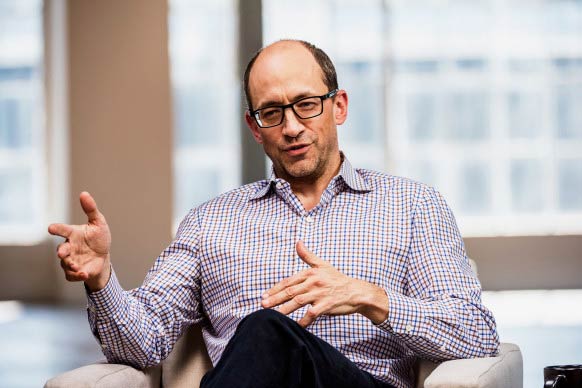
Richard “Dick” Costolo, chief executive officer of Twitter Inc., speaks during a Bloomberg Television interview in San Francisco, California, U.S., on Wednesday, March 18, 2015. More than three dozen technology-industry executives, including Costolo, issued a joint statement urging lawmakers to enact legislation protecting gays and lesbians from discrimination, responding to controversial religious-freedom measures in states such as Indiana and Arkansas. Photographer: David Paul Morris/Bloomberg via Getty Images
Here’s another article from wired.com. Let’s hear from Issie Lapowsky why Twitter is finally taking a stand against trolls. Read on.
EARLY THIS YEAR, Twitter CEO Dick Costolo wrote in a note to employees that he planned to start kicking trolls off of the platform “right and left and making sure that when they issue their ridiculous attacks, nobody hears them.”
Now, just two months later, it seems Twitter is making good on Costolo’s promise. The company today updated its abuse policy to make it tougher for trolls to flood Twitter with threats and harassment. The changes expand Twitter’s definition of violent threats to include indirect threats and tweets that promote violence. The company has also created a tool that will automatically flag tweets that seem likely to be abusive based on triggers including the age of the account and content that fits the pattern of previous tweets identified as abuse.
The thinking now seems to be that it’s better to alienate destructive users if it means holding onto the good ones.
“While dedicating more resources toward better responding to abuse reports is necessary and even critical,” the post reads, “an equally important priority for us is identifying and limiting the incentives that enable and even encourage some users to engage in abuse.”
These changes signal a shift in Twitter’s approach not only to abuse, but to growth. Intense pressure from shareholders to grow its monthly active user base has left Twitter reluctant to take a stand against abuse for fear of jeopardizing its already declining engagement. But over the last year, Twitter’s leaders have begun to realize that the company stands to lose a lot more if it continues to let trolls run amok. The thinking now seems to be that it’s better to alienate destructive users if it means holding onto the good ones.
“We lose core user after core user by not addressing simple trolling issues that they face every day,” Costolo wrote in his February note to employees.
In addition to the filtering feature, Twitter’s new definition of violent language will now make it easier for the company to address abusive language that is not a direct threat. “Our previous policy was unduly narrow and limited our ability to act on certain kinds of threatening behavior,” the post reads. “The updated language better describes the range of prohibited content and our intention to act when users step over the line into abuse.”
As with all web companies, the process of tackling abuse is constantly evolving, and Twitter will update its policies depending on how effective they are at reducing bad behavior over time. For now, at least, it’s heartening to see Twitter prioritizing its users over its bottom line.
This article was originally
published by Issie Lapowsky on
Wired.com
This content is syndicated news that can be used for your research, and we hope that it can help your productivity. This content is for educational purposes and is not made for any kind of commercial purposes of this blog.




